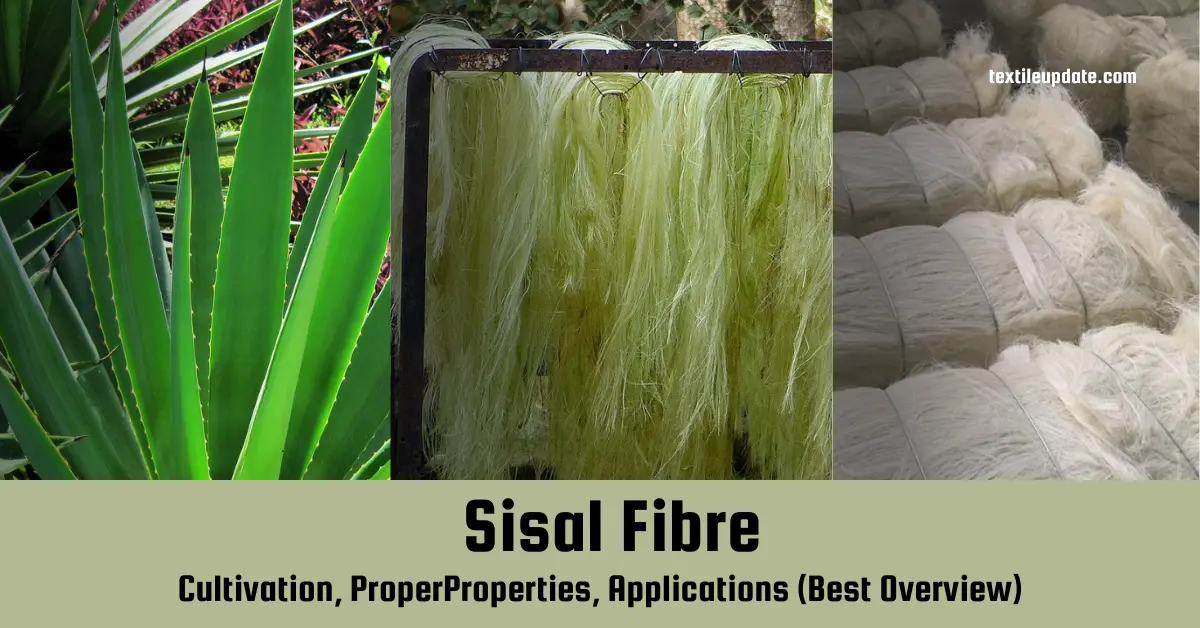The botanical name of sisal fibre is “Agave Sisalana” which is a species of flowering plant and is a native of southern Mexico. It is considered the most important leaf fibre. In the late 19th century (Approx. the 1880s) the commercial interest in sisal fibre had grown up with the development of the Grain Binder Machine because then the demand for twine and ropes was high.
Table of Contents
For this, the cultivation of sisal fibre was started and enclosed only in the Bahamas and Tanzania. But in the first quarter of the 20th century, the cultivation was spreading to Africa and East Asia.
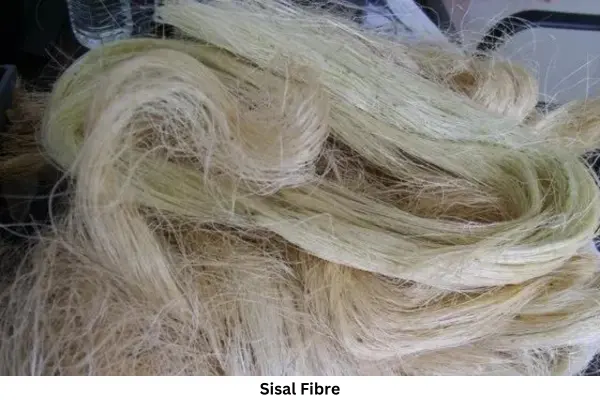
Sisal is a stiff type of fibre and so it is commonly used to make ropes and twins though it has many other uses like making paper, cloth, footwear, dartboards, bags, hats, carpets, and geotextiles too.
SISAL FIBRE: Full Overview
Cultivation Process:
Agave Sisalana(Sisal Plant) has generally a life span of 7-10 years. The leaves of the sisal plant are about 1.5-2.0 meters tall. The leaves are sword-shaped and situated like the rosette on the plant. On the edge of young leaves, some small teeth are grown but as they grow mature the teeth lose themselves.
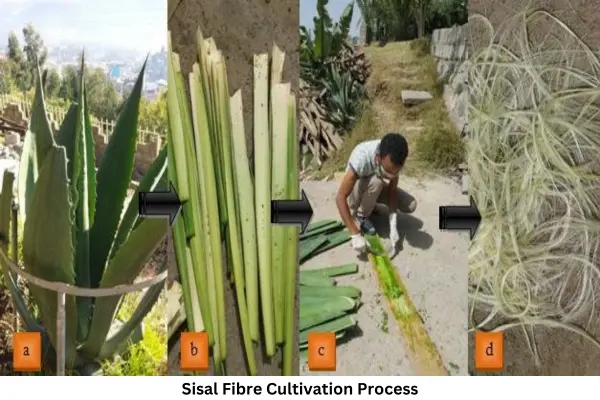
After 2 years of planting the sisal can be harvested. Each sisal plant produces about 200-250 commercially usable leaves depending on the environment, weather, and location of the cultivated area. About an average of 950-1000 fibers can be produced from each leaf. Rich soil with a good drainage system and warm climate is suitable for sisal cultivation.
Sisal Fibre Making Process:
The process of preparing sisal fibre is very interesting. Mainly the fibre is made from the leaf of the sisal plant. At first, the upper layer of the leaves is removed by machinery process and then crushed those leaves between two rollers. Then the trashy of the leaves is excoriated from the fibre and then washed and dried either through mechanical or natural processes.
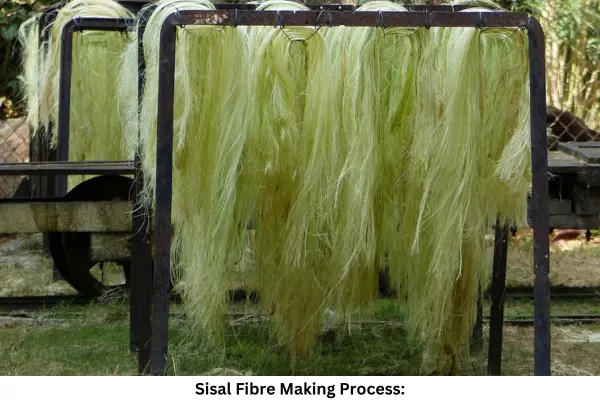
The color of the glazing fibres seems to be creamy white and the average length of each fibre is usually 40 to 50 inches (100 to 125cm), thick and inflexible in character. The sisal fibre is especially valued for making cordage-type products because of its strength, durability, resistance against salt water, etc.
Environmental Effects:
Sisal fibre is 100% eco-friendly fibre and can be a part of overall climate change. It is a non-toxic fibre and essential for people who have allergies and asthma problems. The life cycle of the sisal plant has been observed and it is found that it absorbs more amount of carbon dioxide than it produces.
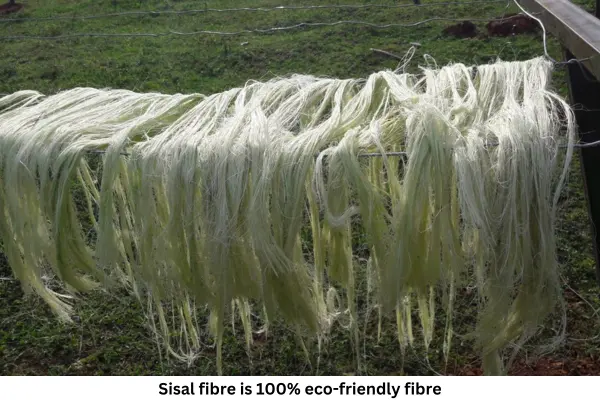
The wastes that it produces are organic and can be used to generate bioenergy, fertilizers, animal feed, etc. Sisal is also fully biodegradable and it reduces soil erosion. On the other hand, no synthetic fibers have these types of characteristics in comparison. Moreover, it can be used as fences to protect crops and lands from animals.
The Physical Properties :
- Density – 1.45g/cm3
- Absorbency – 17%
- Length – 2.88mm
- Width – 22.6 μm
- Diameter – 21.5×10-3cm
- Elongation – 3.02%
- Elastic Strain – 8.7%
- Moisture Regain – 13%
Chemical Compositions : ( % by weight )
- Cellulose (55-65) %
- Hemi-cellulose (10-15) %
- Water soluble materials (1-4) %
- Pectin (2-4) %
- Ash (0.7-1.5) %
- Lignin (10-20 )%
- Fat and wax (0.15-0.30) %
Application of Sisal Fibre / Sisal Fibre Uses :
- Traditionally, sisal fiber is used for making ropes, twines, yarns, etc. from which different types of carpets, handicrafts, and mats can be made by waving. Moreover, the use of products made from natural fibres has increased nowadays because of people’s consciousness.
- It is also used in strengthening rubber, fiberglass, and cement products.
- All kinds of sisal fibers can be used to make products. Such as lower-grade fibres are used to make papers. Medium-grade fibres are used to make ropes, binder twins, etc. Higher-grade fibers are used to make yarns which are then converted into different types of carpets, mats, etc.
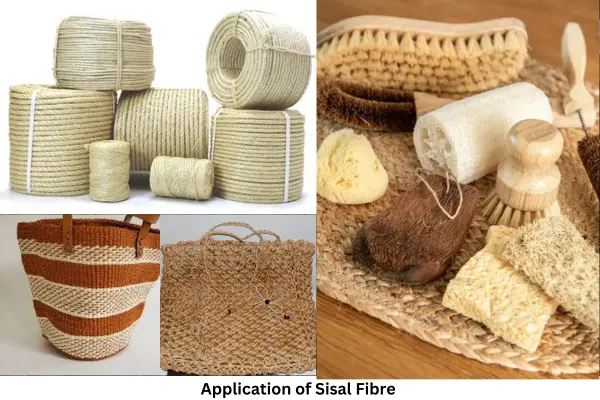
- The flowering period of sisal is quite long so it is a valuable forage for honey bees. It is useful for them in the period of pollen shortage.
- The biogas can also be made from the by-products of sisal fibre.
- The waste produced by sisal fibre can be used as animal feed or fertilizer. Again, the juice made from this plant is also used to make pharmaceuticals.
You may also like to read:
Smart Textile: A New Begining in the Apparel Sector (textileupdate.com)
